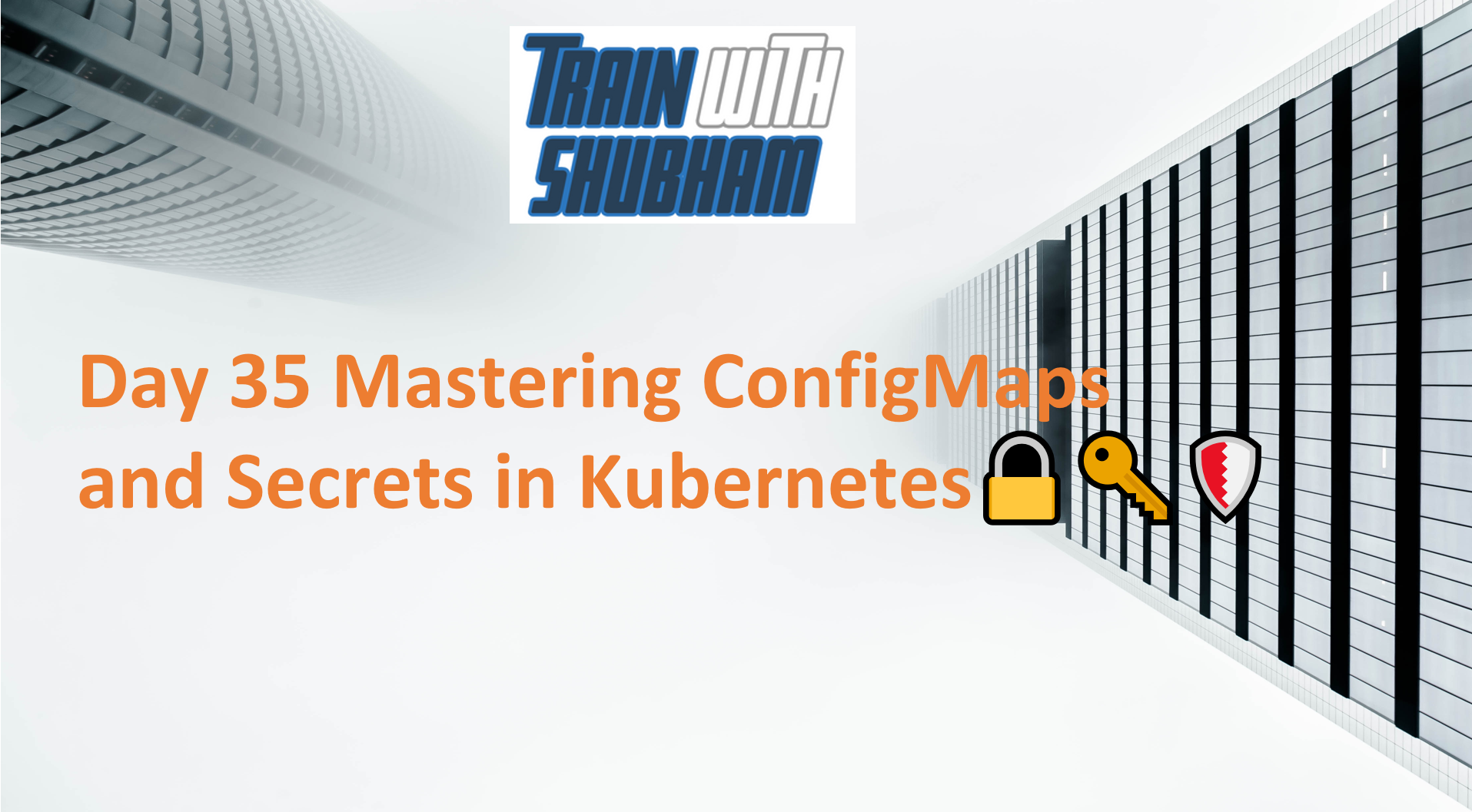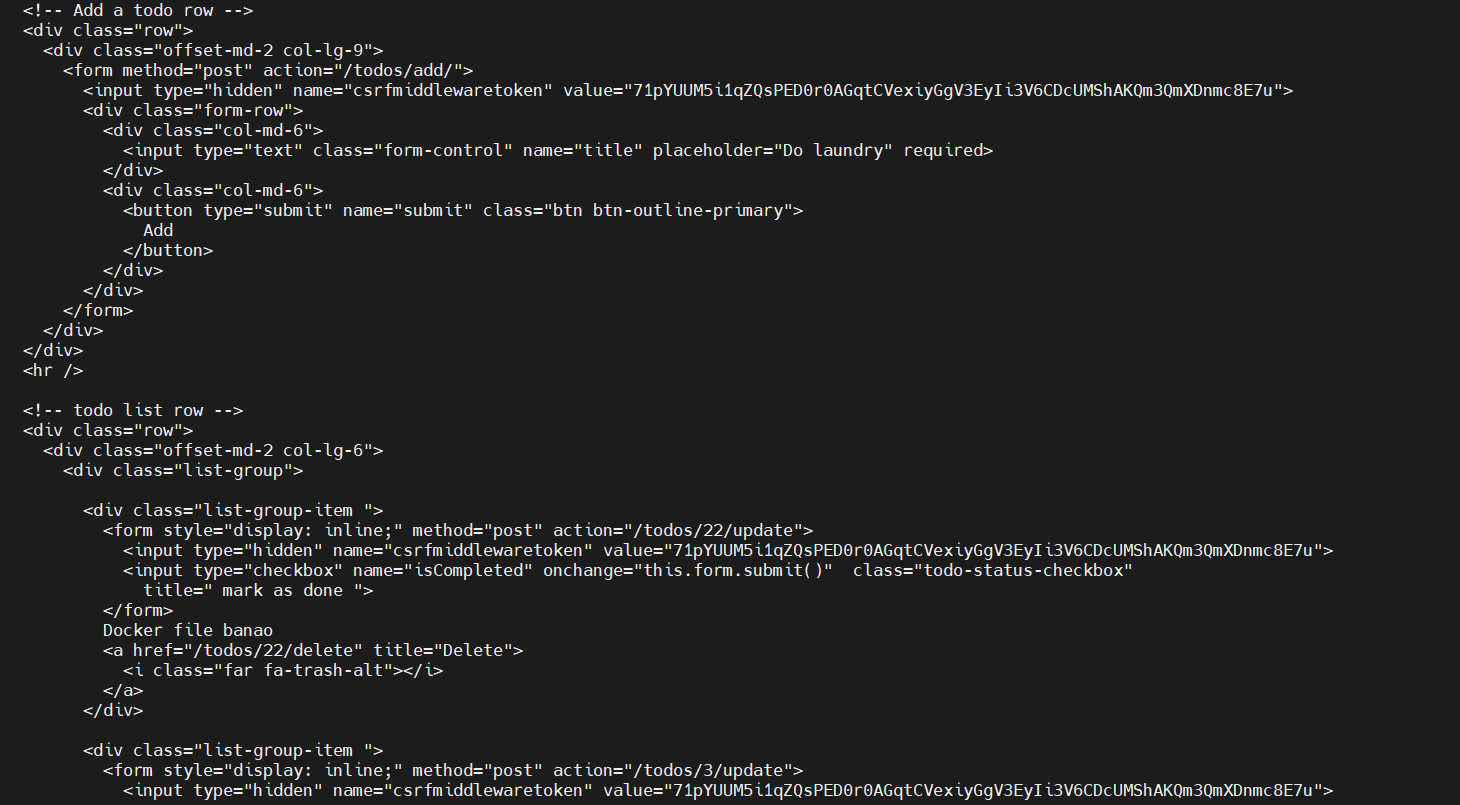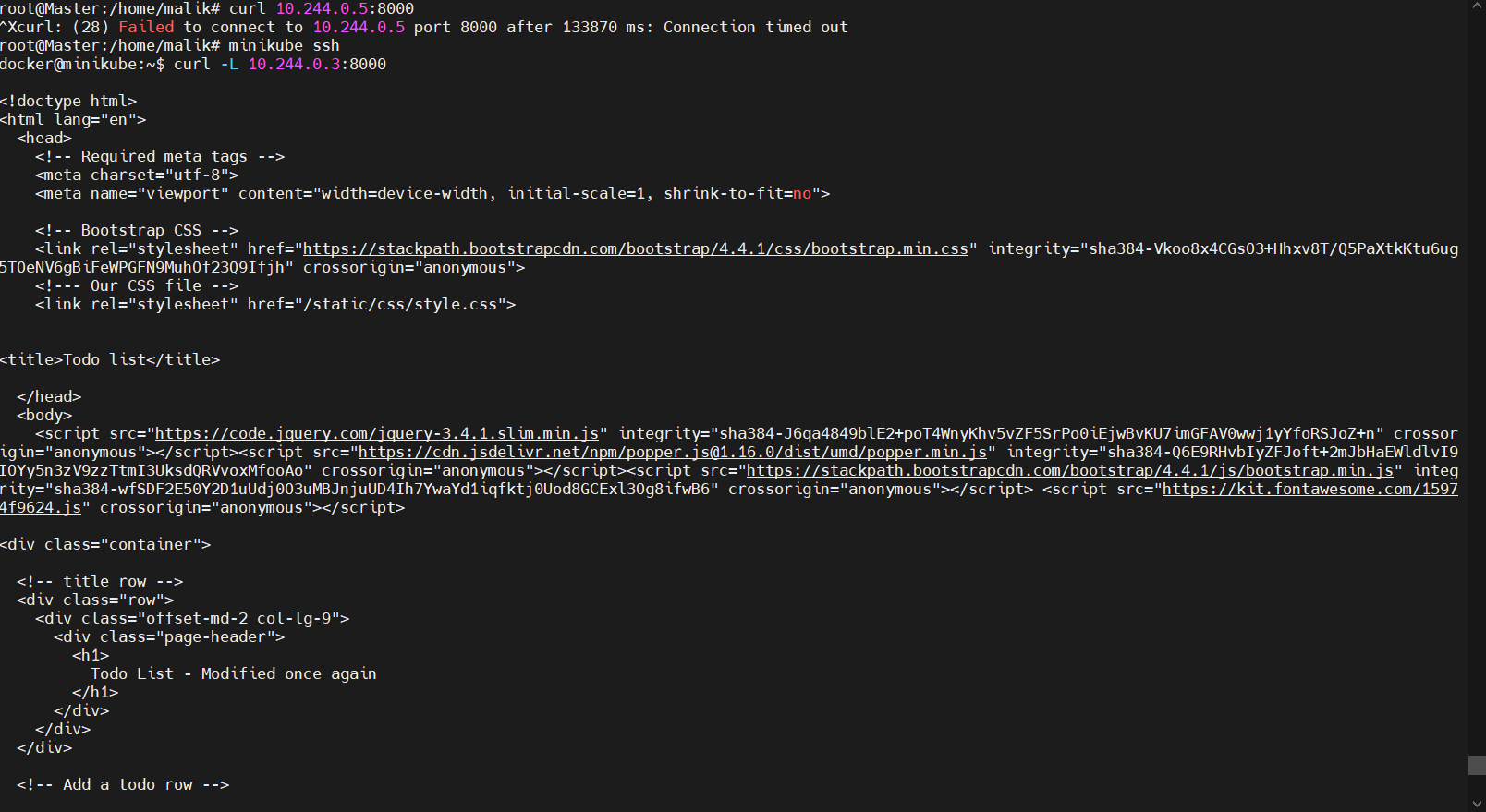Day 35 Mastering ConfigMaps and Secrets in Kubernetes🔒🔑🛡️
 Malik Liaqat
Malik Liaqat
Welcome to Day 35 of our Kubernetes exploration! Today, we're diving into the essential aspects of ConfigMaps and Secrets – powerful tools that allow you to manage configuration data and sensitive information within your Kubernetes applications.
1. ConfigMaps: Managing Configuration Data
ConfigMaps in Kubernetes are a resource object used to store configuration data in key-value pairs, separate from your application code. This separation enhances flexibility, allowing you to modify configurations without altering the application code.
Creating a ConfigMap:
Create a ConfigMap using a YAML file:
apiVersion: v1
kind: ConfigMap
metadata:
name: my-app-config
data:
database_url: "mysql://db-server:3306/mydatabase"
api_key: "your_api_key_here"
Apply the ConfigMap to your cluster:
kubectl apply -f your-configmap-file.yaml
Using ConfigMaps in Pods:
Reference ConfigMap values in your Pod definition:
apiVersion: v1
kind: Pod
metadata:
name: my-app-pod
spec:
containers:
- name: my-app-container
image: your-container-image:latest
env:
- name: DATABASE_URL
valueFrom:
configMapKeyRef:
name: my-app-config
key: database_url
- name: API_KEY
valueFrom:
configMapKeyRef:
name: my-app-config
key: api_key
2. Secrets: Managing Sensitive Information
Secrets in Kubernetes are similar to ConfigMaps but are specifically designed to store sensitive information, such as passwords or API keys. They are encoded in base64 by default.
Creating a Secret:
Create a Secret using a YAML file:
apiVersion: v1
kind: Secret
metadata:
name: my-app-secret
type: Opaque
data:
username: dXNlcm5hbWU=
password: cGFzc3dvcmQ=
Apply the Secret to your cluster:
kubectl apply -f your-secret-file.yaml
Using Secrets in Pods:
Reference Secret values in your Pod definition:
apiVersion: v1
kind: Pod
metadata:
name: my-app-pod
spec:
containers:
- name: my-app-container
image: your-container-image:latest
env:
- name: DB_USERNAME
valueFrom:
secretKeyRef:
name: my-app-secret
key: username
- name: DB_PASSWORD
valueFrom:
secretKeyRef:
name: my-app-secret
key: password
3. Best Practices:
Avoid Hardcoding Secrets:
- Leverage ConfigMaps and Secrets to externalize configurations and sensitive data, reducing the risk of exposure.
Regularly Rotate Secrets:
- Periodically rotate sensitive information stored in Secrets to enhance security.
Use Resource Policies:
- Implement RBAC (Role-Based Access Control) to control access to ConfigMaps and Secrets, limiting exposure.
What are ConfigMaps and Secrets in k8s
A ConfigMap is an API object that stores configuration data for other objects. It lets you decouple environment-specific configuration from container images, so moving your applications gets easier.
Kubernetes Secrets contain small amounts of sensitive data, such as passwords, tokens, or keys. This type of information might be put in pod specs or a container image. However, thanks to a Secret, you can keep your confidential data separate from your app code.
You can create a Secret independently of the pod that uses it. This ability reduces the risk of the data being exposed in the process of creating and editing your pods.
Task 1:
Create a ConfigMap for your Deployment
Create a ConfigMap for your Deployment using a file or the command line
apiVersion: v1
kind: ConfigMap
metadata:
name: todo-app
data:
name: django-todo-app
application: todo-app
protocol: TCP
Apply the changes using :
kubectl apply -f configMap.yaml
Update the deployment.yml file to include the ConfigMap
apiVersion: apps/v1 kind: Deployment metadata: name: config-todo-app labels: app: todo namespace: todo-app spec: replicas: 2 selector: matchLabels: app: todo template: metadata: labels: app: todo spec: containers: - name: todo image: trainwithshubham/django-todo:latest ports: - containerPort: 8000 env: - name: TODO_APP valueFrom: configMapKeyRef: name: todo-app key: application- Apply the updated deployment using the command:
kubectl apply -f deployment.yml -n <namespace-name>
- Verify that the ConfigMap has been created by checking the status of the ConfigMaps in your Namespace.
The given command displays list of all ConfigMaps in your namespace
kubectl get configmaps -n <namespace-name>
The describe command is used to display the status imformation of all the ConfigMaps in your namespace.
kubectl describe configmap <configmap-name> -n <namespace-name>
This command displays the list of pods:
kubectl get pod -n <namespace-name>
Now, lets go inside one of the pods and see the key-value pair we declared earlier in the ConfigMap.
kubectl -n <namespace-name> -it <pod-name> -- bash
Task 2:
Create a Secret for your Deployment
Create a Secret for your Deployment using a file or the command line
apiVersion: v1 kind: Secret metadata: name: my-secret type: Opaque data: username: YWRtaW4= # base64 encoded value for "admin" password: cGFzc3dvcmQyOTA2 # base64 encoded value for "password123"In this example, we’re creating a Secret called
my-secretwith two keys:usernameandpassword. The values for these keys are base64-encoded, so that the encoded sensitive information can be stored as plain text in a file.Lets apply the changes of
secret.yaml:kubectl apply -f secret.yaml -n <namespace-name>- Update the
deployment.yamlfile to include the Secret
- Update the
apiVersion: apps/v1
kind: Deployment
metadata:
name: config-demo
labels:
app: todo
namespace: todo-app
spec:
replicas: 2
selector:
matchLabels:
app: todo
template:
metadata:
labels:
app: todo
spec:
containers:
- name: todo
image: trainwithshubham/django-todo:latest
ports:
- containerPort: 8000
env:
- name: env_secret
valueFrom:
secretKeyRef:
name: my-secret
key: password
- Apply the updated deployment using the command:
kubectl apply -f deployment.yml -n <namespace-name>
- Verify that the Secret has been created by checking the status of the Secrets in your Namespace.
You can use the following command to verify that the Secret has been created :
kubectl get secrets -n <namespace-name>
To view the details of a specific Secret:
kubectl describe secret <secret-name> -n <namespace-name>
To see the key-value pairs of an environment variable in a ConfigMap inside a pod :
kubectl get pod -n <namespace-name>
kubectl exec -it <pod-name> -n <namespace-name> -- bash


That's it! You've just completed the task. 🎉
Thank you so much for taking the time to read till the end! Hope you found this blog informative and helpful.
Feel free to explore more of my content, and don't hesitate to reach out if need any assistance from me or in case of you have any questions.
Conclusion:
Mastering ConfigMaps and Secrets in Kubernetes empowers you to efficiently manage configuration data and handle sensitive information securely. As you integrate these practices into your workflows, your Kubernetes applications become more scalable, maintainable, and, most importantly, secure. Stay tuned for more Kubernetes insights, and happy orchestrating! 🚀 #Kubernetes #ConfigMaps #Secrets #DevOps #ContainerOrchestration #LearningJourney
Subscribe to my newsletter
Read articles from Malik Liaqat directly inside your inbox. Subscribe to the newsletter, and don't miss out.
Written by
